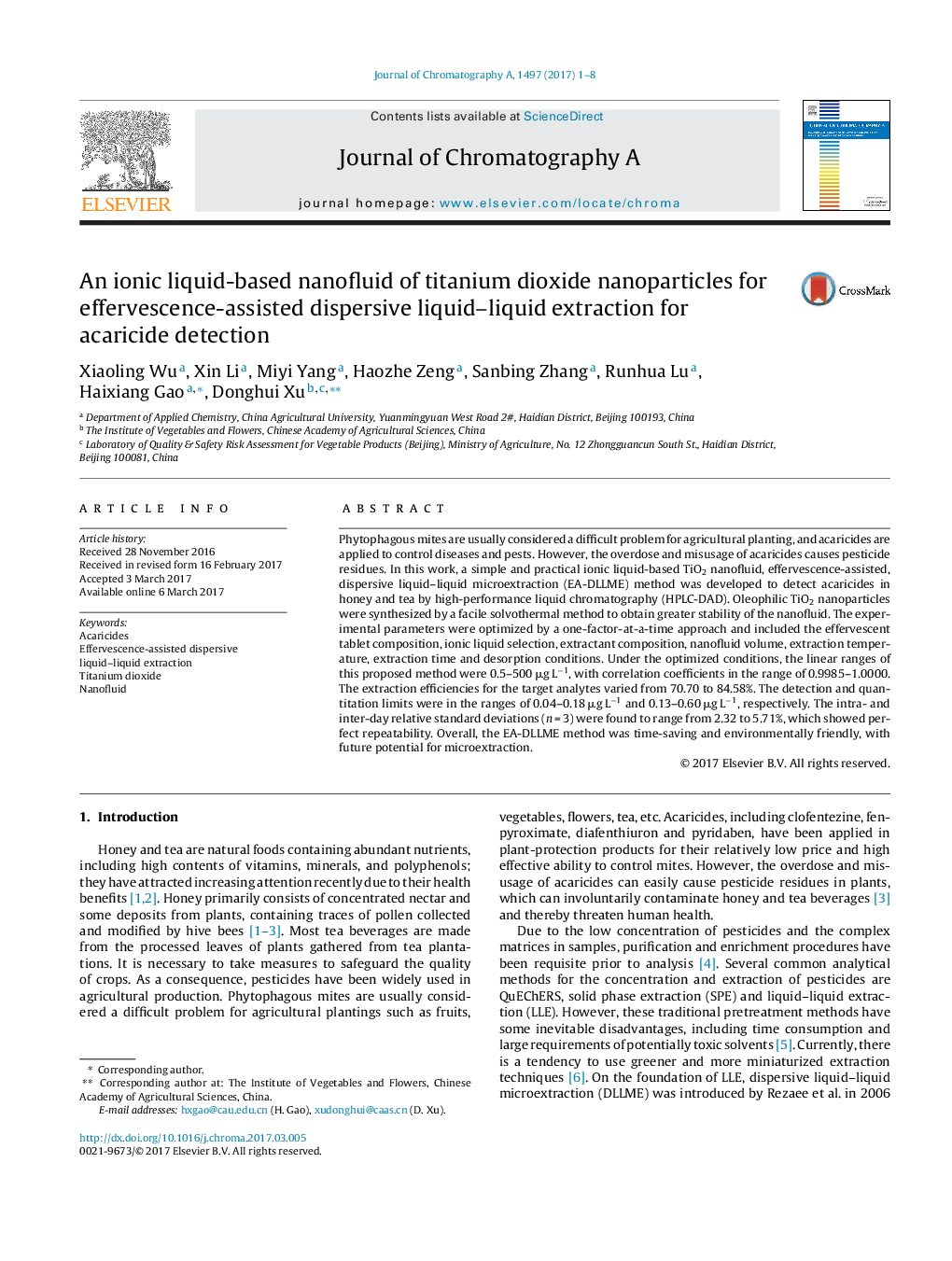| کد مقاله | کد نشریه | سال انتشار | مقاله انگلیسی | نسخه تمام متن |
|---|---|---|---|---|
| 5135535 | 1493429 | 2017 | 8 صفحه PDF | دانلود رایگان |

- A facile solvothermal method was employed to synthesize oleophilic TiO2 nanoparticles.
- The ionic liquid based TiO2 nanofluid was applied for trace acaricide detection.
- The EA-DLLME procedure was proved to speed up the extraction process and greatly reduce the use of organic solvent.
Phytophagous mites are usually considered a difficult problem for agricultural planting, and acaricides are applied to control diseases and pests. However, the overdose and misusage of acaricides causes pesticide residues. In this work, a simple and practical ionic liquid-based TiO2 nanofluid, effervescence-assisted, dispersive liquid-liquid microextraction (EA-DLLME) method was developed to detect acaricides in honey and tea by high-performance liquid chromatography (HPLC-DAD). Oleophilic TiO2 nanoparticles were synthesized by a facile solvothermal method to obtain greater stability of the nanofluid. The experimental parameters were optimized by a one-factor-at-a-time approach and included the effervescent tablet composition, ionic liquid selection, extractant composition, nanofluid volume, extraction temperature, extraction time and desorption conditions. Under the optimized conditions, the linear ranges of this proposed method were 0.5-500 μg Lâ1, with correlation coefficients in the range of 0.9985-1.0000. The extraction efficiencies for the target analytes varied from 70.70 to 84.58%. The detection and quantitation limits were in the ranges of 0.04-0.18 μg Lâ1 and 0.13-0.60 μg Lâ1, respectively. The intra- and inter-day relative standard deviations (n = 3) were found to range from 2.32 to 5.71%, which showed perfect repeatability. Overall, the EA-DLLME method was time-saving and environmentally friendly, with future potential for microextraction.
Journal: Journal of Chromatography A - Volume 1497, 12 May 2017, Pages 1-8